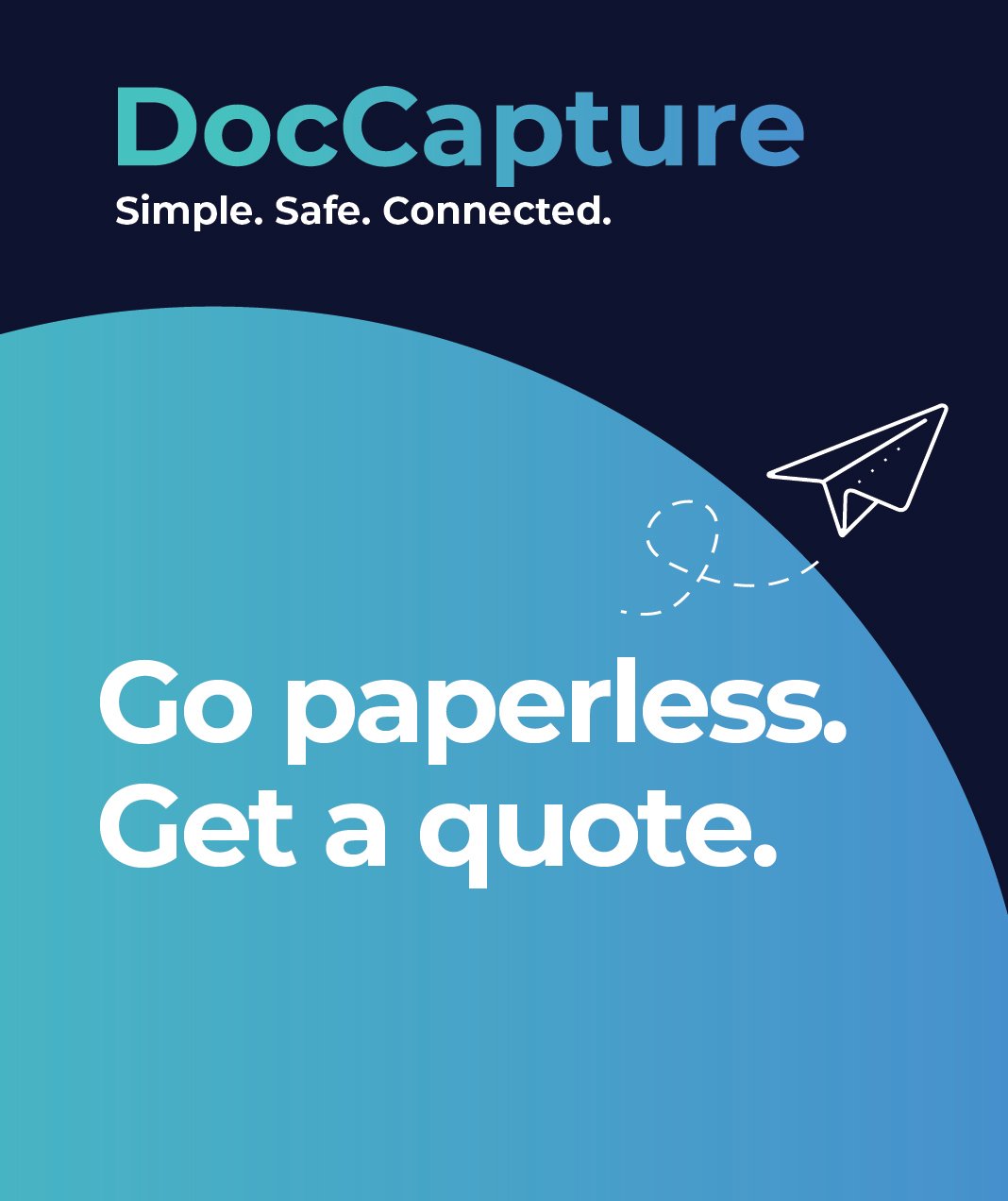Future-Proofing Government Operations: The Shift to Digital Records
Table of contents
Government agencies deal with an overwhelming amount of paperwork. From public records and permits to contracts and legal documents, managing paper files is time-consuming, costly, and prone to errors.
Future-proofing government operations means preparing agencies for long-term efficiency, security, and adaptability. One of the most effective ways to do this is by transitioning from paper-based records to digital formats through document scanning.
By digitizing records, agencies can improve efficiency, enhance security, and ensure compliance with evolving regulations. But despite these clear advantages, many government offices still struggle with bureaucratic resistance, security concerns, and budget limitations.
This article will break down why document scanning is the key to modernization, address common concerns, and provide a roadmap for a smooth transition.
Challenges in Government Records Management
Government agencies aren’t resisting digital transformation just for the sake of it. Shifting from paper-based processes to digital records comes with real challenges, including bureaucratic resistance, security concerns, and the complexity of integrating new systems.
Bureaucratic Resistance to Change
Many government offices rely on decades-old processes that employees are familiar with. Change can feel disruptive, especially when it involves retraining staff and overhauling long-standing workflows. Some officials worry that digitization could lead to job losses or that adapting to new technology will slow down operations.
Security & Privacy Concerns
With cyber threats on the rise, protecting sensitive government data is a top priority. Agencies handling personal records, tax documents, and classified information often fear that going digital will expose them to hacks or data breaches. Without the right security measures, these concerns are valid.
Legacy System Integration Issues
Most government agencies still operate on legacy IT systems that weren’t built for modern digital workflows. Integrating new scanning and document management systems with existing infrastructure can be complicated and expensive without the right strategy.
These challenges make it easy to delay digital transformation. But ignoring them doesn’t solve the problem—it just makes future transitions even harder. Fortunately, document scanning isn’t just about going paperless. It’s about future-proofing government operations in a way that makes sense for security, efficiency, and compliance.
Learn more about how document scanning supports state and county governments.
The Role of Document Scanning in Future-Proofing Operations
Government agencies can’t afford to stick with outdated paper-based processes. Document scanning plays a crucial role in making operations more efficient, secure, and compliant with regulations. Here’s how it helps:
Boosting Efficiency
Paper documents slow things down. Searching for files, retrieving records, and manually processing paperwork wastes time and resources. Scanning documents into a searchable digital database means instant access, reduced administrative burdens, and faster response times for public services.
Discover how document scanning improves efficiency in government.
Enhancing Security & Compliance
Digitized documents can be protected with advanced encryption, access controls, and automated audit trails. This keeps sensitive information safe and ensures compliance with regulations like data privacy laws and records retention policies. Unlike paper files, digital documents aren’t vulnerable to physical damage from fires, floods, or misplacement.
Reducing Costs & Maximizing ROI
Government budgets are tight, but maintaining paper records is expensive. Printing, storing, and managing physical documents adds up over time. Document scanning eliminates these costs, freeing up office space and reducing reliance on physical storage. Plus, a well-executed digital transformation delivers long-term savings and efficiency gains.
Learn how government agencies benefit from document scanning.
Document scanning isn’t just about converting paper into PDFs. It’s a strategic move toward a smarter, more agile government. But even with these benefits, some agencies still hesitate. Up next, we’ll tackle the biggest objections—security concerns and budget constraints—and how to overcome them.
Overcoming Common Objections
Despite the clear benefits of document scanning, government agencies often hesitate due to concerns about security and budget constraints. Let’s break down these objections and how to address them.
“Is Digital Really Secure?”
Cybersecurity is a valid concern, especially for agencies handling sensitive public records. But sticking to paper files isn’t necessarily safer—physical documents can be lost, stolen, or destroyed.
How to Solve It:
- Use advanced encryption to protect scanned documents.
- Implement role-based access controls to ensure only authorized personnel can view certain files.
- Maintain automated audit trails to track who accesses documents and when.
- Partner with a trusted document scanning provider that follows strict security protocols.
See how government agencies can secure digital records.
“We Don’t Have the Budget for This.”
Budget constraints are a common roadblock, but maintaining paper records comes with hidden costs—storage, printing, labor, and inefficiencies add up over time.
How to Solve It:
- Highlight the long-term savings from reduced storage, printing, and administrative costs.
- Look for grant opportunities and government funding programs that support digital transformation.
- Implement scanning in phases, starting with high-priority records to spread costs over time.
- Emphasize the ROI—faster workflows and improved public service delivery make a strong case for funding.
Steps to a Successful Digital Transformation
Transitioning to digital records doesn’t have to be overwhelming. With the right approach, government agencies can modernize their operations smoothly and efficiently. Here’s a step-by-step guide to making document scanning a success.
Assess Your Current Records
Start by identifying which documents need to be digitized first. High-priority records—such as legal documents, permits, and public records—should take precedence. Conduct an audit to determine the volume of documents and their current storage methods.
Choose the Right Document Scanning Partner
Government agencies need a scanning provider that understands security, compliance, and integration challenges. A trusted partner will ensure:
- High-quality scanning with OCR (Optical Character Recognition) for searchable documents
- Compliance with regulations like data retention policies and privacy laws
- Secure handling and encryption to protect sensitive information
Explore government document scanning solutions.
Implement Secure Storage & Access Controls
Once scanned, documents should be stored in a secure digital repository. Use:
- Cloud or on-premise solutions with proper encryption
- Access controls to restrict sensitive files to authorized personnel
- Automated backups to prevent data loss
Integrate with Existing Systems
For maximum efficiency, scanned documents should integrate with current government IT systems, such as records management software, case management systems, or internal databases. This ensures seamless access and reduces manual work.
Train Staff & Encourage Adoption
Employees need to feel comfortable using digital records. Offer training sessions, create simple user guides, and highlight how digital files make their jobs easier. Address concerns early to minimize resistance.
Monitor, Optimize, and Scale
Once the system is live, track performance, gather feedback, and make improvements. Expansion can happen in phases, gradually digitizing more records and refining workflows.
By following these steps, government agencies can future-proof their operations without unnecessary disruptions.
Conclusion
Government agencies can’t afford to rely on outdated, paper-based systems. Document scanning is more than just a convenience—it’s a necessity for efficiency, security, and compliance. By digitizing records, agencies can reduce costs, streamline workflows, and improve public service delivery.
The transition doesn’t have to be complicated. With the right strategy and a trusted partner, government offices can future-proof their operations while maintaining security and compliance.
Ready to take the next step? Fill out our "get a quote" form to see how DocCapture can help your agency transition to a smarter, more efficient digital system.
Share this
You May Also Like
These Related Stories

The Impact of Document Scanning on Government Transparency

Cost-Effective Governance: Cutting Costs with Document Scanning

